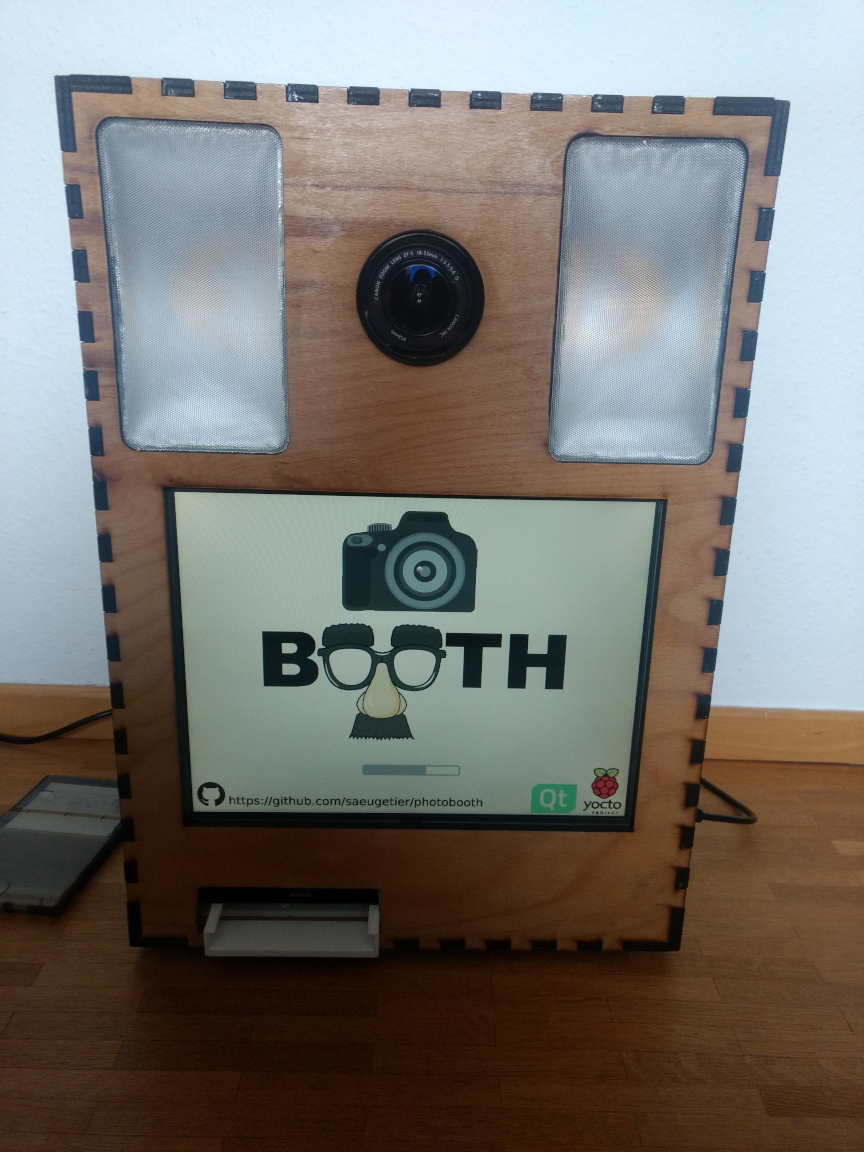Retrospect: Photobooth Project
A few years ago, I embarked on a Photobooth project. I describe it as ‘started’ because, while it is operational, it’s not yet complete. The ideas and roadmap for the project are available in the GitHub repository. I plan to add features periodically.
The project began in January 2018. I constructed the hardware using components I had on hand: a Raspberry Pi 2, an old Canon DSLR, a 15-inch touchscreen, and I designed a housing for the setup. To enable photo printing, I acquired a used Canon Selphy CP910 photo printer. Lighting the scene is achieved using two 20-watt LEDs, powered by LED TV backlight drivers. I discovered that these drivers are quite suitable, as they allow for brightness control via a PWM signal.

However, hardware was only part of the equation. I needed software to run the system. My search for existing software compatible with a touchscreen and capable of running on a Raspberry Pi came up empty. Consequently, I decided to develop my own application.
As a C++ programmer specializing in hardware-oriented software (embedded firmware), I had some experience with Qt applications. At the time, QML was in its early stages but offered greater flexibility in design, prompting me to experiment with it. QML required an up-to-date version of Qt, but the Raspberry Pi’s Debian-based operating system had outdated packages. The available version of Qt was too antiquated for effective QML usage. The only solutions were compiling Qt from source or opting for a different Linux distribution.
QML relies on an OpenGL backend for rendering, necessitating hardware acceleration. Unfortunately, only the Raspberry Pi’s native operating system supported full graphics acceleration. Compiling Qt for the Raspberry Pi from source was a slow, labor-intensive process. Fortunately, another solution was Yocto, a tool for building custom distributions through configurations. Yocto had ready-to-use recipes for building Qt, which I utilized to create my own configuration, enabling the Photobooth application to run on the hardware.
Main features of the Photobooth software include:
- Full touchscreen UI control
- Self-timer for photo capture and storage.
- User-selectable collage layouts, defined via XML file.
- Filter selection for each photo in a collage.
- Printing of collages or individual photos through the photo printer.
- Display of snapshots on the menu screen.
- Transmission of configuration XML from a USB drive, with export options for photos and collages.
A few months ago, I recorded a demo of the application:
Another video showcases an older version on actual hardware:
Now, Raspberry Pi OS includes up-to-date versions of Qt, rendering the construction of a custom distribution unnecessary. However, this process was a valuable learning experience in embedded Linux, and it led to a fully customized system with a boot-into-application feature and a custom boot screen.

Utilizing Qt/QML has provided flexibility and strong performance. I’ve even successfully ported the Photobooth software to Android, running it on an older LG G3 phone.

Writing the application with Qt/QML was not the only challenge. Significant difficulties involved controlling the Canon DSLR (EOS 450D) and the Canon Selphy photo printer.
The Photobooth provides a live preview of the image. Both capturing photos and the live preview are managed via GPhoto2. Fortunately, someone had already developed a Qt Plugin for integrating GPhoto2. The challange: the Canon camera enters standby mode if the trigger isn’t pressed for a certain period. This can be prevented by periodically activating the auto-focus via the shutter button. Alternatively, I later discovered that setting an environment variable named “capture” to “true” at regular intervals achieves the same result. Consequently, I created a fork of the plugin with patched code to handle this.
Using printers in Linux can be challenging at times. While CUPS does an admirable job, printing photos through it often results in less than perfect prints. The Android app for the Canon Selphy printer circumvents this issue by sending JPEG data directly to the printer, yielding flawless prints. This process involved some reverse engineering of the protocol, which was then reimplemented in GoLang. I contributed some stability patches to this implementation.